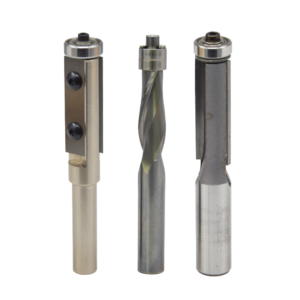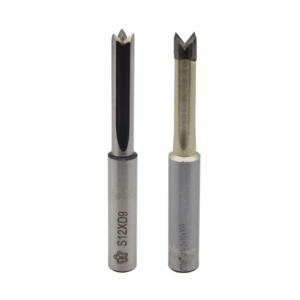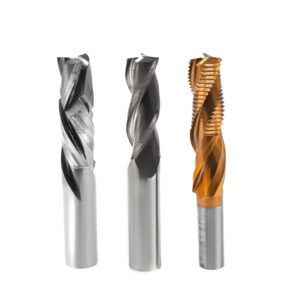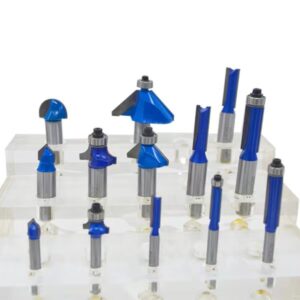In wood cutting or wood processing, router bits have the most types. These different types of woodworking router bits have a wide range of applications, such as engraving, cutting, slotting, milling, slotting, and drilling.
With so many drill bits on the market, choosing the right drill bit for your job can be frustrating and confusing, and there are too many factors to consider when choosing. So what is the main basis for choosing a router bit? Here we have collected 5 important principles for choosing a woodworking router bit as follows.
Before deciding what kind of router bit to choose, you must have some basic knowledge about them.
For the classification of router bits, there are four main classification methods:
The first is the integral type, which means that the cutter body and the blade edge are made as a whole.
The second is the integral welded blade, the blade is made of carbide or other wear-resistant materials and welded to the cutter body.
The third is the row tooth type, the cutter teeth are fixed to the cutter body by mechanical clamping, and the replaceable cutter teeth can be integral materials or welded materials.
The last type is the indexable type, and the indexable structure is widely used in face milling cutters, end mills, and three-edge milling cutters.
Regardless of the shape and type of milling cutters, the most important thing is their material.
In terms of materials, router bits are of four types: high-speed steel (HSS), cemented carbide (TCT), solid carbide, and polycrystalline diamond (PCD).
High-speed steel (HSS)
Due to their relatively short service life compared to cemented carbide, HSS router bits need to be frequently sharpened with diamond grinders. However, HSS is heat-resistant and not prone to breakage. Router bits made of HSS are ideal for cutting softwood and light plastics.
Tungsten Carbide (TCT)
The cutting edges of TCT router bits are made of tungsten carbide, which has excellent sharpness and durability. Therefore, they do not require regular sharpening. Although TCT router bits are slightly more expensive, they have low maintenance costs and can increase productivity.
Solid Carbide
CNC milling cutters made of solid carbide are more expensive than HSS and TCT. They are more wear-resistant and have higher hardness. Solid carbide milling cutters have better performance on harder materials such as hardwood, hard plastics, and soft metals. However, they are brittle and more likely to break during operation, so extra care is required when using them.
Polycrystalline Diamond (PCD)
PCD milling cutters are made of diamond particles mixed into a carbide substrate to achieve extreme hardness and wear resistance. CNC milling cutters made of PCD or PCBN (polycrystalline cubic boron nitride) are ideal for cutting hard metals.
Router bits are widely used in woodworking. Whether for personal use or for machining, router bits are efficient tools. When choosing a router bit, you should consider the following five important factors.
1- Material to be cut by the router bit
No matter which tool you are going to use, the first thing we should consider is the material to be processed. The cutting material determines the material of the tool.
Wood cutting objects can be mainly divided into solid wood and wood composite materials. The cutting performance of the drill bit will show differences due to the structure of the cutting material and the proportion and properties of the additives, so the cutting material is an important consideration.
2-Processing surface quality requirements
The quality of the wood product processing surface is related to the geometric parameters and shape and position accuracy of the milling cutter. The corrugation of the milling cutter surface is closely related to the feed rate of each cutter head of the milling cutter. Therefore, methods such as adjusting the number of teeth and the milling cutter diameter according to the quality requirements of the processing surface can improve the processing surface quality.
3-Cutting direction
One of the biggest characteristics of wood is anisotropy, especially solid wood, because it grows naturally and consists of wood fibers arranged in a certain way.
When cutting solid wood, wood cutting is divided into longitudinal, transverse, and end according to the direction of the blade relative to the wood fiber. It is also necessary to consider the choice of drill bit according to the direction of cutting.
4-Tool rotation direction and feed direction
We also need to select the appropriate tool blade inclination direction according to the tool axis rotation direction and the wood workpiece feed direction.
5-Workpiece stability
Workpiece stability refers to the smooth feed and no jumping of the wood workpiece during the cutting process. To enhance the stability of the workpiece, it is necessary to select the expected matching parts according to the specific machine model.
For example, for vertically mounted profile milling cutters, large diameter milling cutters are conducive to improving the stability of the processed workpiece.
After this brief article, I believe you now know what to consider when choosing a router bit.



